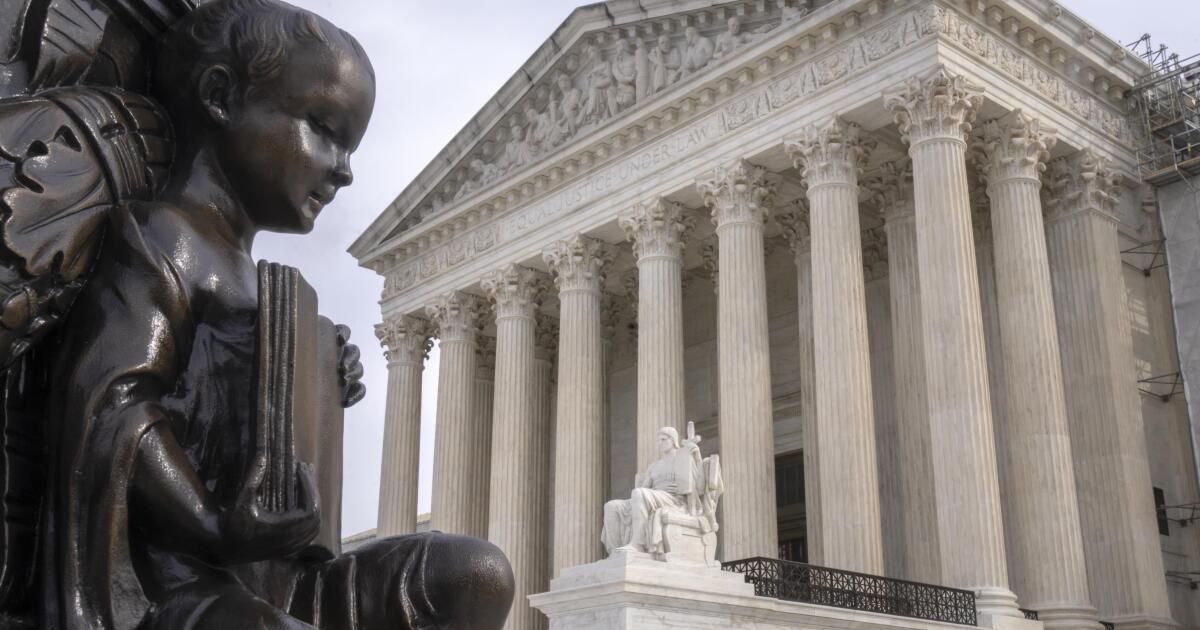President Biden has told progressives in Congress that he will soon back proposals to reform the Supreme Court, including by placing term limits on judges and imposing an ethics code.
He also spoke in favor of a proposed constitutional amendment that would repeal presidential immunity granted by the conservative Supreme Court two weeks ago, according to media reports Wednesday.
But the president apparently remains opposed to expanding the court from nine to 13 judges.
If Democrats were to win control of the House and Senate in the November elections and Biden were re-elected, some or all of these legislative proposals could move forward early next year, but that outcome appears increasingly unlikely.
For now, Biden's proposed reforms remain largely political talking points for Democrats and progressives.
Advocates of judicial reform, however, welcomed Biden's show of support.
“The court has long been the most powerful and least accountable part of our government, and the long-term success of our democracy cannot be assured without implementing changes to our all-powerful and unaccountable juristocracy,” said Gabe Roth, executive director of Fix the Court, a judicial reform advocacy group.
“The vast majority of the country, regardless of party, believes that judges should not serve for life but should be subject to basic oversight like Congress and the executive branch,” Roth said.
Over the past decade, term limits have been a popular idea for many Republicans and, more recently, for most Democrats.
Sean Eldridge, president of Stand Up America, a progressive advocacy group, pointed to a national poll in March that found voters, by a 64% to 24% margin, said they supported bills in Congress to set an 18-year term limit for Supreme Court justices.
“No one should have unlimited power for life, but that is exactly what is happening right now on our nation’s highest court,” Eldridge said. “Despite mounting ethics scandals and attacks on our fundamental freedoms, the Supreme Court remains unaccountable. Congress and the president have the power to fix that and restore confidence in our judiciary.”
The Constitution states that judges, once appointed, “shall hold office as long as they observe good conduct,” which has been understood to mean that they have a life term.
Justice Clarence Thomas, the court's longest-serving current member, won Senate confirmation by a 52-48 vote in October 1991 and has served under six presidents.
The rule of life tenure for judges can also lead to uncertain and possibly unfair transfers of power, with long-lasting consequences.
Justice Ruth Bader Ginsburg died in September 2020, just before President Trump lost his reelection bid. But it was enough time for Senate Republicans to fill her seat with 48-year-old Judge Amy Coney Barrett, who cast a decisive vote to overturn the Roe v. Wade ruling on abortion.
While Presidents George W. Bush and Barack Obama each won two terms as president and each made only two appointments to the Supreme Court, President Trump added three justices in his four-year term.
A decade ago, Republicans favored term limits and Democrats were wary, Roth noted. In 2015, Sens. Ted Cruz (Texas) and Marco Rubio (Fla.) were seeking the Republican presidential nomination and calling for term limits for Supreme Court justices.
“Liberals weren’t there on the scene. They criticized him for ‘trying to limit the terms of Hillary’s appointees,’” Roth said. But since the Supreme Court gained a 6-3 conservative majority, Democrats have championed term limits for the court.
If the term limits proposals are approved, each new justice would have a single 18-year term on the Supreme Court, and each president would be able to appoint two new justices during a four-year term in the White House.
If such a bill were to become law, a newly elected President Biden or President Trump would be authorized to appoint a new justice in 2025 and a second new justice in 2027.
Proponents say such a system would be fairer and more predictable.
But the term limit proposals differ on what happens once a new justice is appointed. Senate Democrats propose that the court’s most senior member — in this case, Thomas — become a “senior justice retired from active duty.” He could occasionally replace another justice if he or she were recused from deciding a case.
Such a plan would almost certainly be challenged as unconstitutional. While Congress can by law change the number of justices on the Court, it does not appear to be able to override the rule of life tenure for current justices.
Other term limit proposals would add new judges to the Court without forcing senior judges to retire. For example, a newly appointed judge could join the Court in 2025, giving the Court a total of 10 judges.
Proponents of this approach say it has a much better chance of being upheld as constitutional.
Biden has not said what approach he plans to support.
It is also unclear what ethical standards might be included in the law. Congress could establish new rules for hearing complaints involving judges.
The Supreme Court said it had adopted a code of conduct for the nine justices, but those rules have no external application. Moreover, some of the justices have said that Congress cannot impose its rules on the court.












